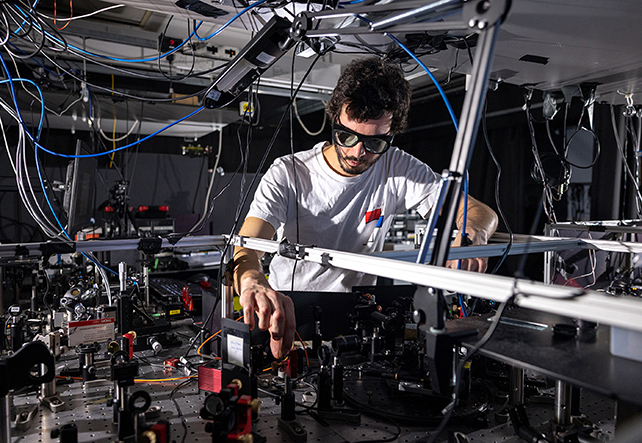In 1801, British scientist Thomas Young carried out a 'double slit' experiment that has gone down in physics history: By shining light through two slits in a material, he showed that light behaved like a wave, taking different paths simultaneously only to intefere in predictable ways once they recombine.
Since that pioneering moment, the experiment has been repeated to demonstrate electromagnetic radiation displays both wave-like and particle-like behaviors. To put it another way, light can act like marbles rolling down a slope and like ripples in a pond, depending on how they're measured.
It's not just photons that act this way, either. Scientists have used similar setups to show electrons, neutrons, and whole atoms behaving in the same fashion, establishing a core tenet of quantum physics as a theory based on probability.
Now scientists have recreated Young's experiment with a modern twist. Instead of a pair of slits separated in space, they used 'time slits' created by rapid adjustments in the reflectivity of a material, testing the ability for a wave of light to interfere with its own past and future.
"Our experiment reveals more about the fundamental nature of light while serving as a stepping stone to creating the ultimate materials that can minutely control light in both space and time," says physicist Riccardo Sapienza from Imperial College London in the UK.
Sapienza and his colleagues utilized a thin layer of indium tin oxide, a material used in smartphone screens. Laser pulses changed its reflectivity to create two distinct periods where light can be measured hitting the material, providing distinct paths in time where a single wave of light can interfere with itself.
Those differences in time changed the frequency of the light as it struck the material, with inteference between the different waves producing distinct colors rather than differences in brightness. The scientists studied this interference pattern to make observations about the light's wave-like behavior.

"The double time slits experiment opens the door to a whole new spectroscopy capable of resolving the temporal structure of a light pulse," says physicist John Pendry from Imperial College London.
Interestingly, the slits opened up much faster than the scientists expected – between 1 to 10 femtoseconds (quadrillionths of a second). That the experiment outran the theoretical modeling suggests that part of that modeling needs to be rethought: materials don't necessarily interact with light exactly the way scientists thought they did (when intensity or speed changes, for example).
Having a material like this, which can change the way it reacts to light in timescales that are absolutely minute, could be useful in developing new technology and digging deeper into the mysteries of quantum physics.
It's going to be useful on the largest scales, too, in the study of phenomena such as black holes. Next, the team wants to try their 'time twist' on another material, the atomic crystal, where atoms are in a strict pattern – which may lead to rapid improvements in electronics.
"The concept of time crystals has the potential to lead to ultrafast, parallelized optical switches," says physicist Stefan Maier from Imperial College London.
The research has been published in Nature Physics.
